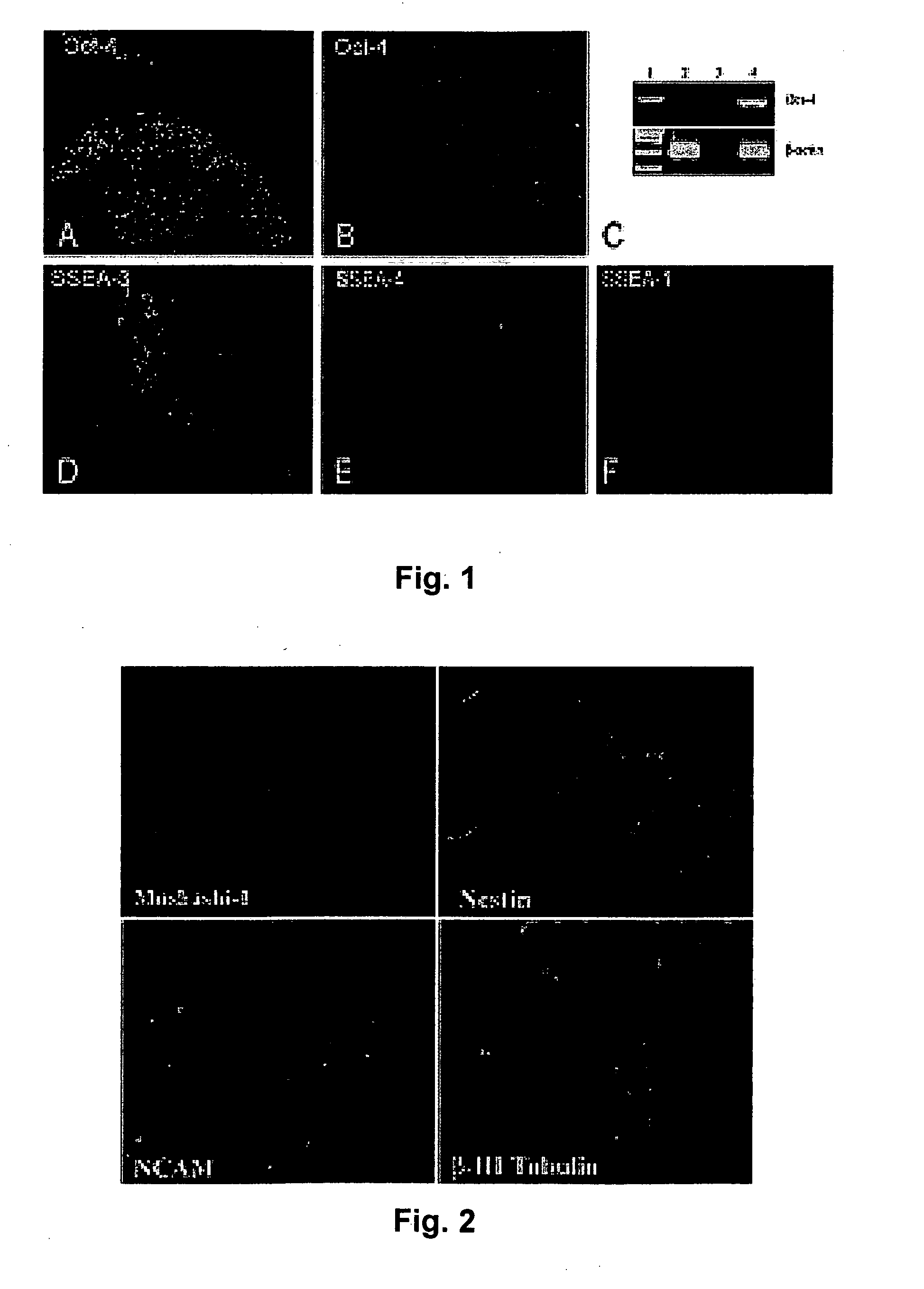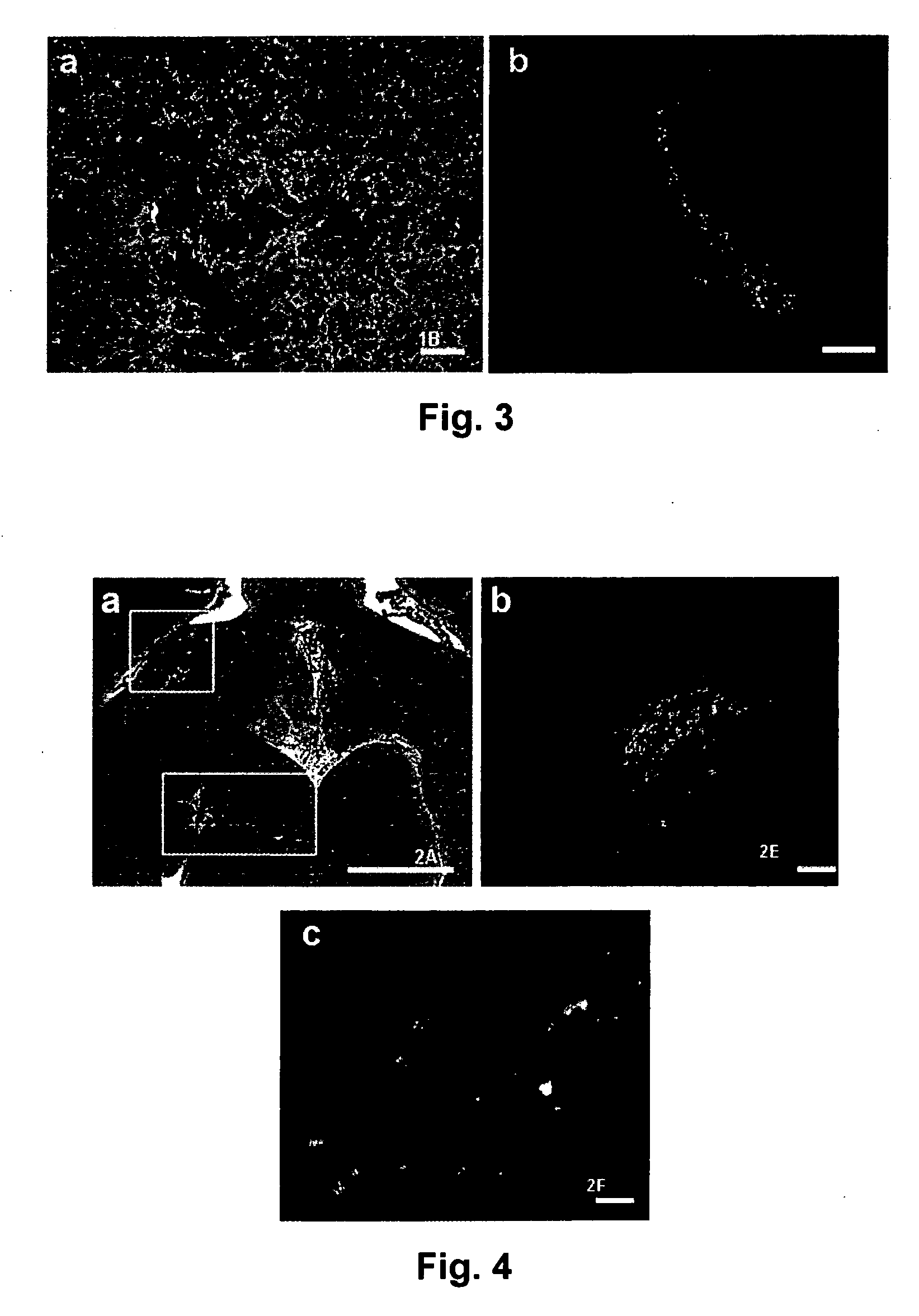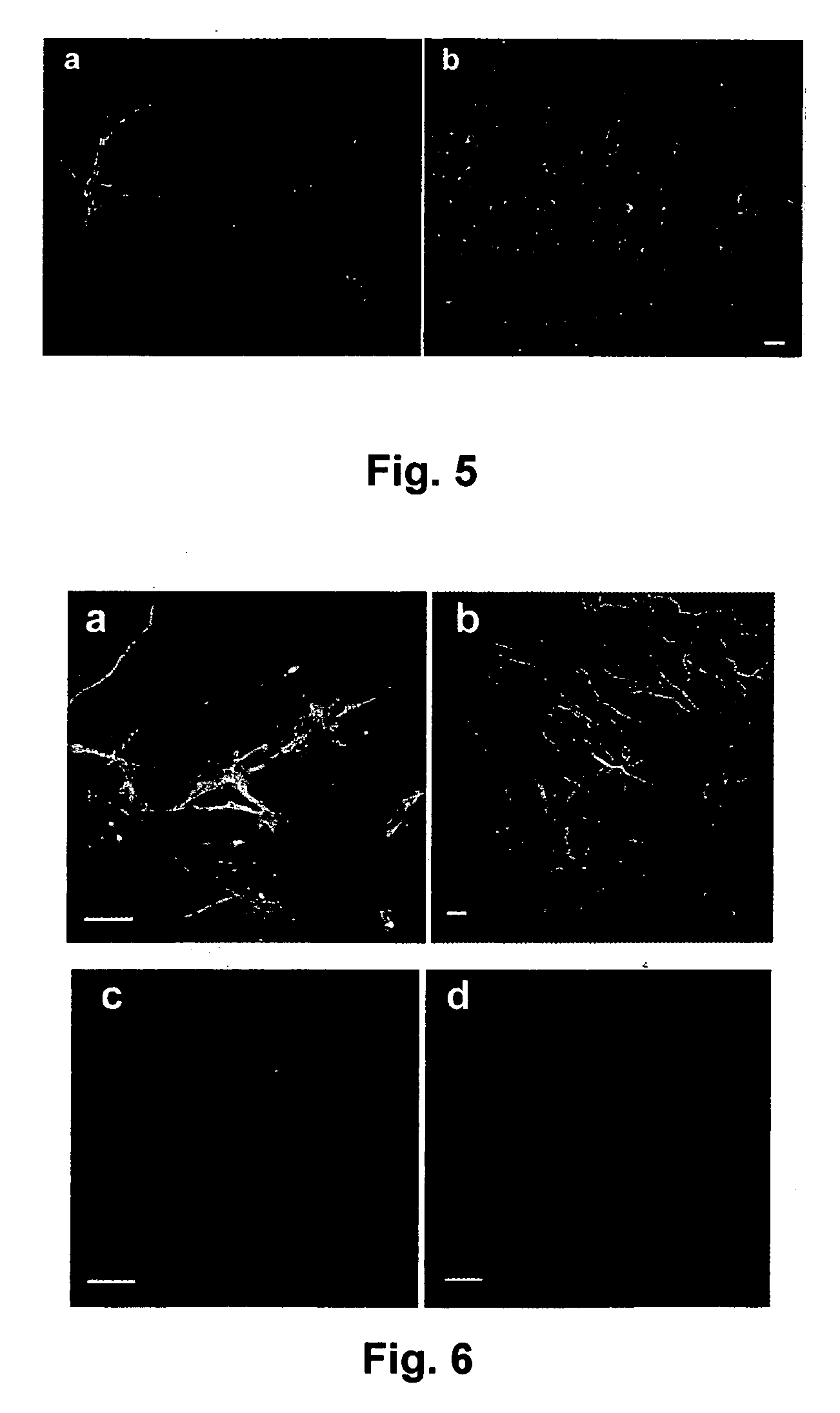Transplantable cell growth niche and related compositions and methods
a technology of transplantable cells and growth niches, applied in the direction of artificial cell constructs, embryonic cells, skeletal/connective tissue cells, etc., can solve the problems of large-scale use of some of these culture systems, spontaneous differentiation and unpredictability of escs, and introduction of non-human pathogens or antigens
- Summary
- Abstract
- Description
- Claims
- Application Information
AI Technical Summary
Benefits of technology
Problems solved by technology
Method used
Image
Examples
example 1
Growth, Differentiation and Transplantation of hESCs
[0071] Pluripotent hESCs (HSF-6, University of San Francisco and H7, Wicell). can be maintained on feeder fibroblasts derived from 14.5 day CF-1 mouse embryos (FIG. 1) or FF-2 human foreskin fibroblasts (ATCC) (Mangoubi, R. S., Jeffreys, C. G. Desai, M. N. Jane, E. P. Sammak, P. J, Support Vector Machine and Parametric Wavelet-Based Texture Classification of Stem Cell Images. Submitted IEEE Transactions in Biomedical Engineering, 2005; Sammak, P. J., et al., Pluripotent Embryonic Stem Cells Have Plastic Chromatin and Nuclei that Stabilize Upon Differentiation. Developmental Cell, 2005. submitted; and Constantinescu, D., et al., Lamin A / C expression is an early marker of mouse and human embryonic stem cell differentiation. Stem Cells, 2005. In Press). We have differentiated hESC into neuronal lineages in vitro by several methods. Reducing the density of feeder fibroblasts permits controlled differentiation of HSF-6 hESCs to neurona...
example 2
Characterization of hASCs
[0076] While ESCs were characterized by the provider (University of California-San Francisco for line HSF6 and WiCell for HI cell line), the ASCs were isolated and characterized specifically for this project from patients. ASCs were identified by differential adhesion used during the cell isolation procedure, the presence of stem cell marker (CD90) and 26, absence of the endothelial cell marker, CD34 and smooth muscle marker CD146). Further, we find that the ESCs can be directed down desired neural, glial or oligodendrocytic lineages by varying the density of ASCs in co-culture
[0077] In this Example, two behaviors of ESCs on ASC feeder layers were characterized: the degree of natural ectodermal differentiation by ESCs: neural stem cells versus neural subtypes and the number of hESCs that were driven toward neural differentiation. Human Adipose Stem Cells were isolated through collagenase digestion of whole adipose tissue obtained from patients undergoing e...
example 3
[0085] We have differentiated human embryonic stem cells (hESCs) into neural stem cells (NSCs), neurons, astrocytes and oligodendrocytes in a hESC-hASC (Patient-specific human adipose tissue-derived stem cell) co-culture system. NSCs are neuroprotective and hASC are immunosuppressive. This study describes a 3-D collagen matrix containing an optimized combination of NSC, hASC, astrocytes, and growth factors that will protect motor neurons in an animal model of ALS from neurodegeneration without generating an extensive immune response. This study involves the following tasks.
[0086] Develop a humanized neural stem cell culture based on co-culture of hESC on hASC 086]Determine hASC concentration and culture media composition for optimal production of NSC and astrocytes in a humanized system that will be minimally immunogenic in humans.
[0087] Differentiate NSC into motor neurons to be used for in vitro testing of matrices and characterize by marker expression and electrophysiological f...
PUM
| Property | Measurement | Unit |
|---|---|---|
| diameter | aaaaa | aaaaa |
| diameter | aaaaa | aaaaa |
| volume | aaaaa | aaaaa |
Abstract
Description
Claims
Application Information
 Login to View More
Login to View More - R&D
- Intellectual Property
- Life Sciences
- Materials
- Tech Scout
- Unparalleled Data Quality
- Higher Quality Content
- 60% Fewer Hallucinations
Browse by: Latest US Patents, China's latest patents, Technical Efficacy Thesaurus, Application Domain, Technology Topic, Popular Technical Reports.
© 2025 PatSnap. All rights reserved.Legal|Privacy policy|Modern Slavery Act Transparency Statement|Sitemap|About US| Contact US: help@patsnap.com



